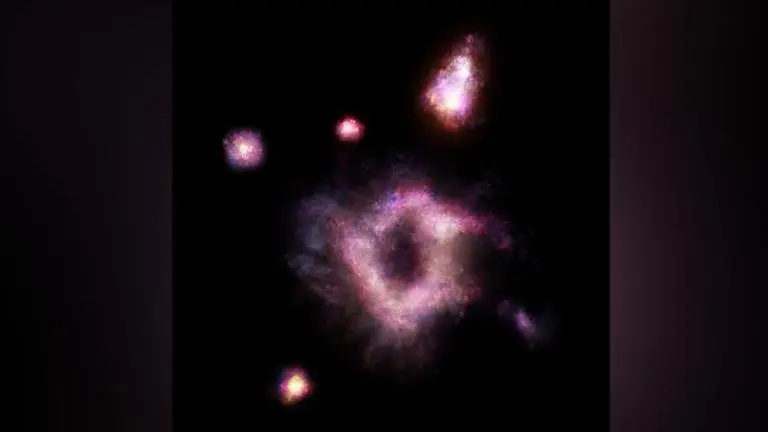Updated 26 May 2020 at 08:35 IST
Scientists discover giant doughnut-shaped galaxy, hope for insights on galactic structures
Scientists have discovered a galaxy that looks like a massive "cosmic ring of fire" that could help in learning more about the evolution of galactic structures.
- Science News
- 2 min read

Scientists have discovered a galaxy that looks like a massive "cosmic ring of fire" and stated that the discovery could help in learning more about the evolution of galactic structures. The incredibly rare kind of galaxy has a similar mass to that of Milky Way but is shaped like a doughnut with a hole in the middle, according to a press release from the ARC Centre of Excellence for All Sky Astrophysics in 3 Dimensions (ASTRO 3D) released on Monday, May 25.
Astronomers have managed to capture an image of the galaxy and revealed what it looked like 11 billion years ago. The galaxy has been named R5519 and it is 11 billion light-years away from our Solar System. As noted by the scientists, the hole at its center has a diameter two billion times bigger than the distance between Earth and the sun. The discovery is described in details in the journal Nature Astronomy.
A group of scientists from across the world used spectroscopic data to identify the galaxy, and evidence suggests it may be the first "collisional ring galaxy" located in the early universe.
Advertisement
About collisional ring galaxies
Collisional ring galaxies are formed after colliding with other galaxies. It is said that the discovery could help astronomers understand how our own galaxy, the Milky Way could have formed. As per the study, it takes a "thin disk" of material present in one galaxy to collide with another to form a collisional ring galaxy.
Spiral galaxies such as the Milky Way also said have thin disks that started forming around nine billion years ago, but the R5519 collisional ring galaxy is some 11 billion years old. This discovery indicates that disk assembly in spiral galaxies occurred over a more extended period than previously thought, said a scientist.
Advertisement
(Image credits: Wonders of the Universe)
Published By : Gloria Methri
Published On: 26 May 2020 at 08:35 IST
